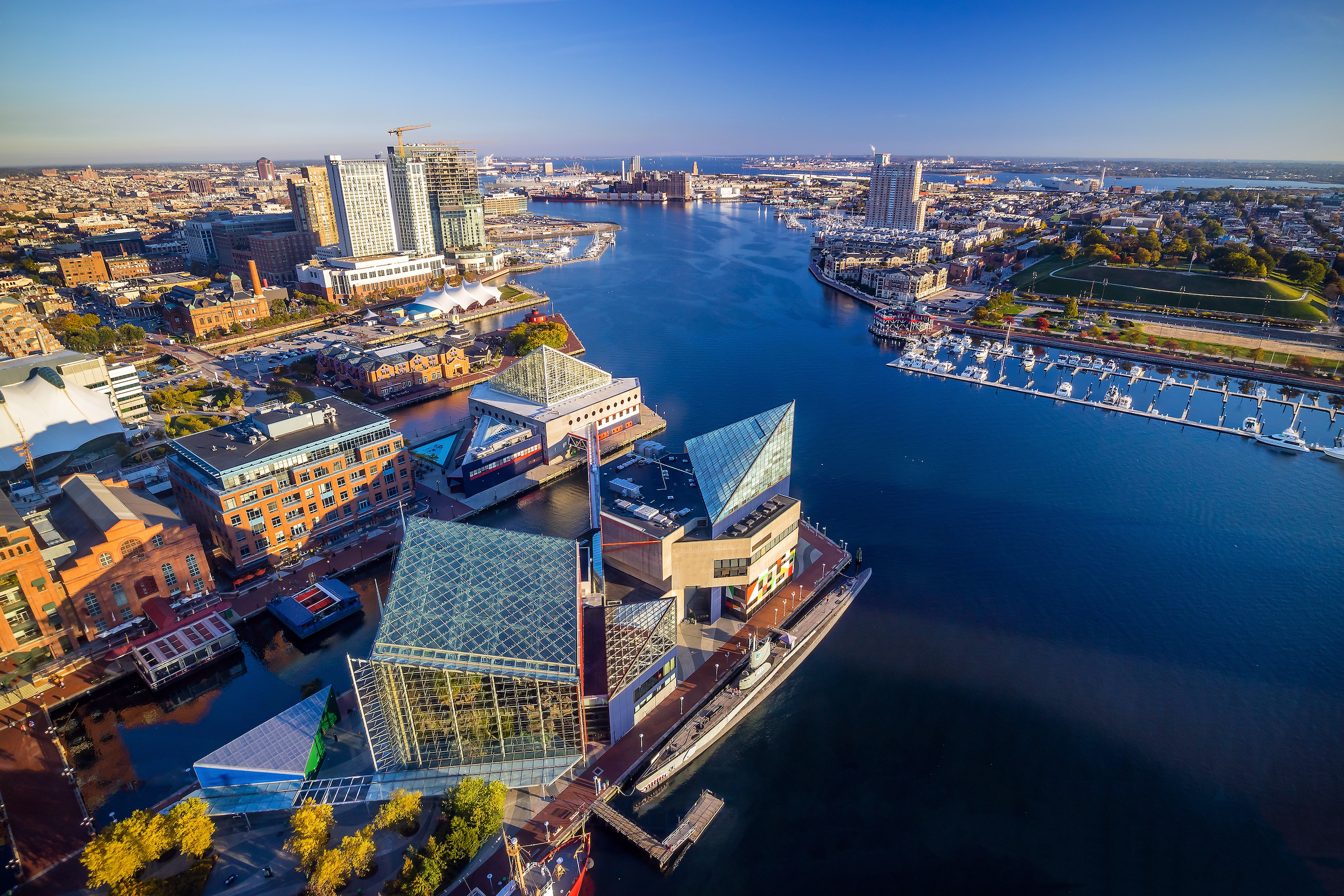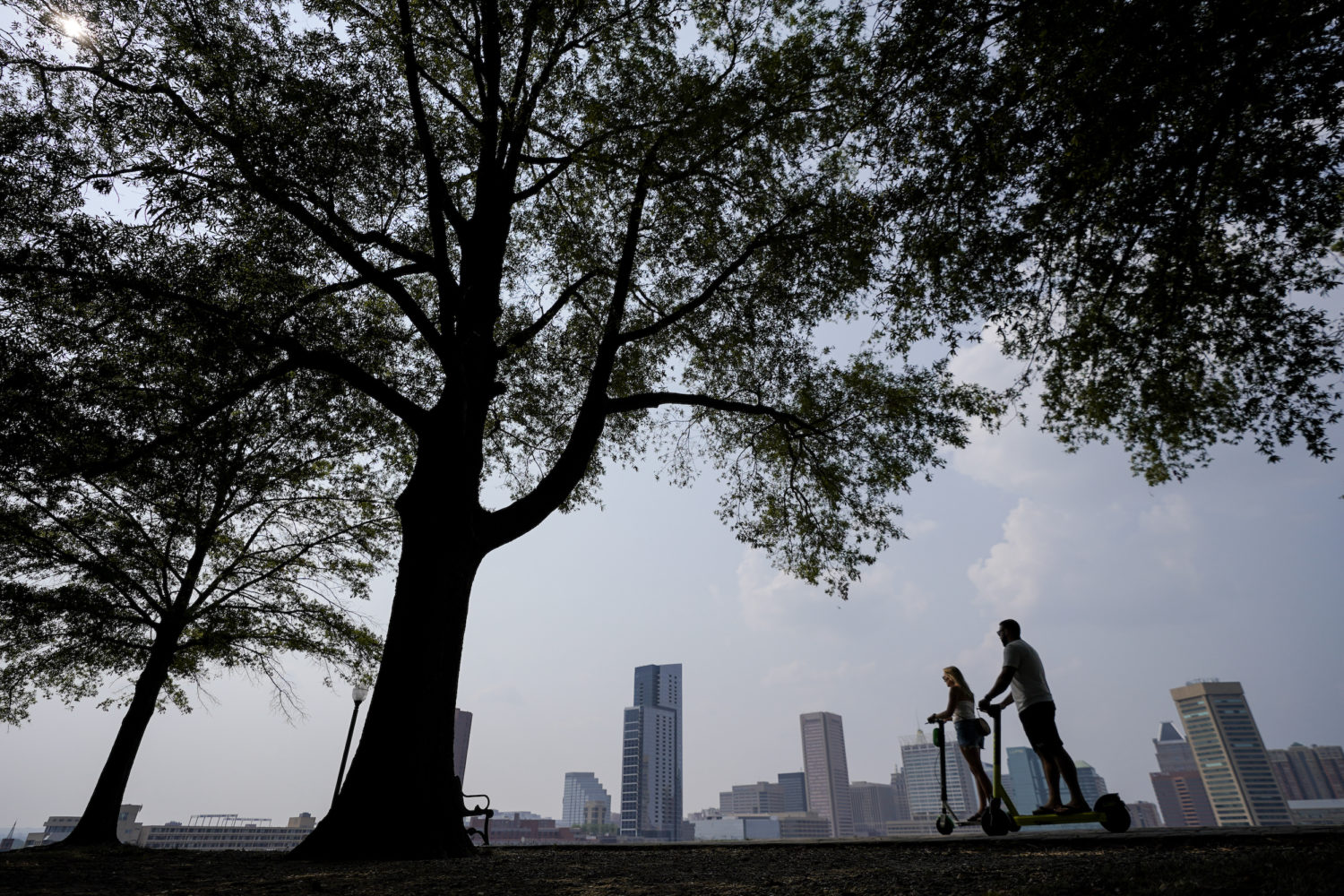This article was originally published on Northwestern University’s Medill Local News Initiative website and is republished here with permission.
While many other local media organizations operate out of basements, spare bedrooms and the stripped-down offices that replaced once-mighty newsrooms, the hottest new nonprofit in local journalism is moving into swanky new digs overlooking Baltimore’s Inner Harbor.
The Baltimore Banner’s much-anticipated debut is going to be different than those of other nonprofit journalism experiments, not least because it has ample funding from the start. As many as 50 staffers will be on hand for the office ribbon-cutting in early April, and the space has room for at least 50 more, reflecting ambitious expectations for growth.
The Banner is the brainchild of hotel magnate Stewart W. Bainum Jr., a former Maryland politician determined to boost local journalism in a famously competitive news town. Money has been no object, so far, and in an interview with the Local News Initiative on March 17, Bainum repeated his pledge to donate or raise $50 million over four years for the project.
His overarching goal: develop a model for local news that his fellow civic-minded, philanthropic investors can rally around in cities from coast to coast.
Since formulating his plan last year, Bainum has recruited an experienced team headed by Wall Street Journal veteran Imtiaz Patel as chief executive officer and the Los Angeles Times’ Kimi Yoshino as The Banner’s editor-in-chief. They’ve been busy hiring staff, building systems and otherwise laying the foundation for the subscriber-supported, all-digital publication they expect to launch in June — the exact launch date is still “give or take,” as Patel puts it.
The Banner will announce itself with social media and digital advertising, billboards and events, Patel said, and after the initial splash he expects a slow build to reach his target of 100,000 subscribers within four years.
Is 100,000 realistic? Bainum acknowledges The Banner will be battling subscription fatigue, among other headwinds. But he’s confident that in a metro area of 2.8 million, demand for high-quality local news exists “at scale,” he said, which is biz-speak for making no small plans. “We’ve found over many years in business that if you set big, audacious goals, you have a better chance of achieving them.”
A business-like approach
The Banner is more business-like in its approach than other nonprofit journalism startups, noted Jim Friedlich, CEO of the nonprofit Lenfest Institute for Journalism in Philadelphia, who has advised The Banner management team. “It’s an experiment in what nonprofit newsrooms can do with resources, ambition and scale,” he said. “They’re seasoned businesspeople, in it for the long run and funded for the long haul.”
While The Banner hadn’t sold a single subscription as of mid-March, it is counting on subscriptions to make up half of the mature company’s revenue. Advertising will be 15%, and donations (other than Bainum’s) will be 10-15%, according to Patel. The balance will come from “monetizing” the audience, Patel said, through events and branded products.
The Banner site will be “ad-lite,” with no pop-ups or other serious distractions, and a hybrid paywall will offer some free content such as “social-impact stories,” Patel said. “I think of Stewart as seed capital, allowing us to get this operation going,” he said. “Our goal is to get to sustainability, which means not asking Stewart for money for our day-to-day existence.”
The Banner team admits to studying practically all the country’s nonprofit news organizations before settling on a business model that relies more heavily on subscription revenues than some others. Patel said he scrutinized operations ranging from The Texas Tribune and The Philadelphia Inquirer to the new partnership between public-radio station WBEZ and the daily Chicago Sun-Times.
The closest match he found to The Banner is The Daily Memphian, an all-digital publication that competes with The Commercial Appeal, a legacy newspaper owned by Gannett, much as the Banner intends to find a niche in a market long dominated by The Baltimore Sun — which Bainum tried to buy before he decided to launch The Banner.
MORE FROM POYNTER: A philanthropist pivots: How Stewart Bainum Jr. came to pledge $50 million to launch The Baltimore Banner
Still, Memphis is half the size of Baltimore and, Patel stresses, he isn’t building a replica of any existing news organization. “We’re building the newsroom of the future.”
Much of that newsroom-building work falls to Yoshino, who moved 3,000 miles to take up the task, after a distinguished career in Los Angeles.
Job No. 1 has been attracting top talent, which has gone slower than she, or Patel, anticipated. As of mid-March, she had hired “15 to 18” newsroom staffers, she said, including several from the rival Sun. Yoshino originally targeted a 50-journalist staff at launch, but now expects about 30. “We’re trying to be deliberate and smart about it,” she explained.
The Banner was more aggressive in hiring on the business side and lining up state-of-the-art technology, after hearing regrets from other media startups about inattention to commercial matters. A dozen full-time staffers were on board before The Banner brought in its first newsroom hire, Bainum said. He and Patel said they considered dozens of potential candidates over months before making Yoshino their first choice for the top editorial job.
Priorities for news coverage

A view of Inner Harbor area in Baltimore. The Baltimore Banner has leased space at 621 E. Pratt St. (Shutterstock)
Partly because of the slow newsroom hiring and partly because of a willingness to learn by trial and error, The Banner debuting in June or thereabouts will not be what Yoshino considers a “final product,” she said. “We see ourselves as continuing to add on, this year and into next year.”
In a Reddit “ask-me-anything” interview with potential readers on March 11, Yoshino went into detail about her priorities for news coverage, including a commitment to cover the Black Butterfly as well as the White L, nicknames for the segregated clusters that make up Baltimore.
“We are hiring reporters to cover areas that are specifically not the White L,” she wrote. “We see those reporters as being present there — at community meetings, out and about, talking to people.”
Along with neighborhood news, local government and education, Yoshino sees arts and culture coverage as an early must-have. “That coverage is often underrepresented but can be a real driver of readers and subscriptions,” she said.
The Banner will cover crime from a “policy standpoint and a community standpoint,” but not by chasing “every single piece of crime,” Yoshino said. Solutions-oriented journalism and commentaries from voices outside the newsroom also will figure into the early mix. “I think we should be almost like a digital town hall of sorts.”
Sports and business coverage will mostly come later, and Yoshino has no current plans for unsigned editorials. As part of its obligations as a nonprofit 501(c)3, The Banner will not endorse political candidates, she confirmed.
The slow pace of newsroom hiring comes as no surprise to Lenfest’s Friedlich, as the mix is critical. “One part of our business you can’t rush is hiring great people. You need a balance of lived experience, geography, race, gender, income and political orientation among members of the newsroom and readers,” he said. “The more diverse the newsroom, the more diverse the news and the audience will be.”
Patel and Yoshino similarly emphasize The Banner’s commitment to diversity. “We’re being very, very deliberate about the kind of talent we want and the diversity of the newsroom in race and gender but also age, experiences, from Baltimore and not from Baltimore,” said Patel.
MORE FROM POYNTER: Stewart Bainum Jr. is advertising for help to launch a ‘high profile, well-funded’ news startup in Baltimore
In Yoshino’s interview over Reddit, some Baltimoreans expressed skepticism. As in other big cities, newsroom staff in Baltimore haven’t matched the diversity of the community they cover. And while The Banner has launched a program to showcase homegrown writers and artists, it also chose a newsroom in the Power Plant district, among the most touristy spots in town.
The Banner initially focused on grittier locations familiar to Americans who know Baltimore mainly from “The Wire” television series. But the nascent operation hit the jackpot with its lease, Bainum said, which is surprisingly lower in cost than less-desirable options and will include prominent signage, plus free office furniture as well.
Among those welcoming the “newcomers” to Baltimore journalism is Trif Alatzas, publisher and editor in chief of the Sun.
“We are proud of The Sun’s 185 years of accountability journalism and of providing the most comprehensive news and information to audiences throughout Maryland through our digital and print platforms,” Alatzas said in a statement to the Local News Initiative. “Our award-winning news team makes up the largest group of journalists in the area, and we are pleased that new reporters and editors have joined us in recent months. As leaders in this community, we already are delivering the news 24/7, and we plan to continue on that path for generations.”
The journalism world is watching
No one should be surprised by intense scrutiny of everything about The Banner, from its newsroom location and editorial choices to the charity tax returns it will file. “It’s not an overstatement to say that The Baltimore Banner is going to be the most closely watched local digital news startup in America this year,” said Tim Franklin, senior associate dean and John M. Mutz Chair in Local News at Northwestern University’s Medill School of Journalism, Media, Integrated Marketing Communications. “It’s going to be a case study for the viability of local digital news startups in metropolitan regions.”
Franklin, who served as the editor of The Baltimore Sun from 2004 to 2008, said he likes the Banner’s chances. “It has a well-heeled and mission-driven founder. It has an editor with big-time experience and talent. It has the resources to build a robust newsroom out of the gate. It’s entering a market with a significantly weakened legacy competitor. And Baltimore is a great news town. All the conditions are ripe for The Banner to make a go of it.”
Still, The Banner faces “a huge challenge” to build an audience and brand awareness from scratch, Franklin said. “The Sun still has a stable of talented journalists and a sizable digital subscriber base,” he observed. “It will not be an easy path for The Banner to hit its subscriber goals. Everyone in the local news industry is going to be watching and learning from The Banner’s experiences.”







